Solar Camping Lights: Your Ultimate Guide to Eco-Friendly Outdoor Illumination
Solar camping lights have become a game-changer for outdoor enthusiasts, offering a sustainable and convenient way to illuminate campsites, gardens, and trails. Powered by the sun, these lights combine portability, eco-friendliness, and versatility, making them a must-have for campers, hikers, and anyone who loves spending time in nature. This comprehensive guide explores the benefits, features, and practical tips for choosing and using solar camping lights to enhance your outdoor adventures.
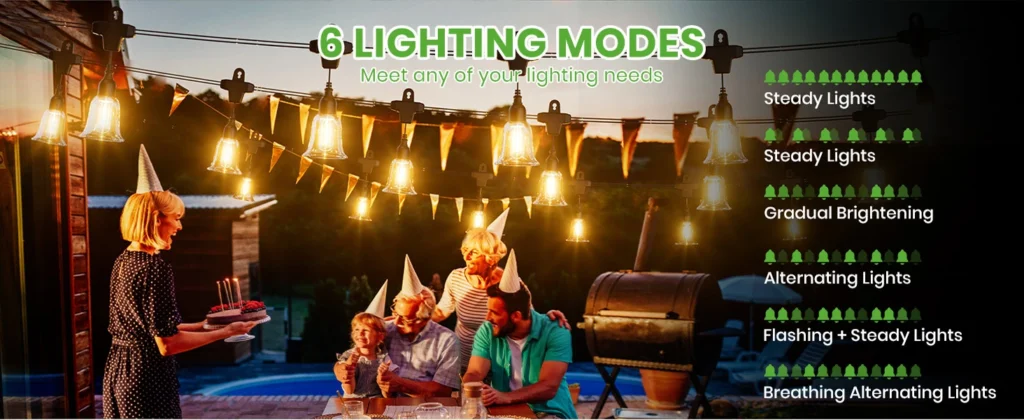
Why Choose Solar Camping Lights?
Solar camping lights harness solar energy to provide reliable lighting without the need for batteries or fuel. This eco-conscious choice reduces your environmental footprint while offering practical advantages for outdoor activities.
Environmental Benefits
By using renewable solar energy, these lights eliminate the need for disposable batteries, reducing waste and pollution. They operate without fossil fuels, making them a sustainable option for environmentally conscious campers.
Cost-Effectiveness
While the initial cost of solar camping lights may be higher than traditional options, they save money over time. With no need for battery replacements or fuel, your long-term expenses are minimal, and the sun’s energy is free.
Portability and Convenience
Designed for outdoor use, solar camping lights are lightweight and easy to pack. Many models are compact, foldable, or collapsible, making them ideal for backpacking, car camping, or even emergency use at home.
Key Features to Look for in Solar Camping Lights
When selecting solar camping lights, understanding their features ensures you choose a product that meets your needs. Here are the essential aspects to consider.
Brightness and Lumens
The brightness of a solar camping light is measured in lumens. For general campsite use, 100-300 lumens is sufficient for tasks like cooking or reading. For larger areas or group camping, opt for models with 500 lumens or more. Adjustable brightness settings allow you to conserve energy when full power isn’t needed.
Battery Life and Charging Time
Most solar camping lights have built-in rechargeable batteries that store solar energy. Look for models with a battery life of 6-12 hours on a single charge, ideal for overnight use. Charging times vary, typically ranging from 6-8 hours in direct sunlight. Some lights also offer USB charging for cloudy days or faster recharging.
Durability and Weather Resistance
Outdoor environments can be harsh, so choose lights with durable materials like ABS plastic or stainless steel. A weather-resistant rating, such as IP65 or IP67, ensures protection against dust, rain, and splashes, making the light reliable in unpredictable conditions.
Design and Versatility
Solar camping lights come in various designs, including lanterns, string lights, and spotlights. Some feature collapsible designs, hanging hooks, or magnetic bases for easy setup. Multi-functional lights that double as power banks for charging devices are especially useful for extended trips.
How to Use Solar Camping Lights Effectively
To maximize the performance of your solar camping lights, proper setup and maintenance are key. Here are practical tips to get the most out of your lights.
Optimal Placement for Solar Charging
Place the solar panel in direct sunlight during the day to ensure efficient charging. Avoid shaded areas under trees or tents. If camping in low-sunlight conditions, consider a light with a detachable solar panel that can be positioned independently for better exposure.
Strategic Lighting for Campsites
Use solar camping lights to create a well-lit campsite. Hang lanterns from trees or tent poles for ambient lighting, place spotlights near pathways to prevent tripping, or use string lights to add a cozy atmosphere. Positioning lights at different heights and angles enhances visibility and aesthetics.
Maintenance and Care
Keep the solar panel clean by wiping it with a soft cloth to remove dust or debris, as dirt can reduce charging efficiency. Store the lights in a dry, cool place when not in use to prolong battery life. Check for any wear or damage before each trip to ensure reliability.
Comparing Solar Camping Lights to Traditional Options
Solar camping lights offer distinct advantages over traditional battery-powered or fuel-based lanterns, but it’s worth comparing them to understand their value.
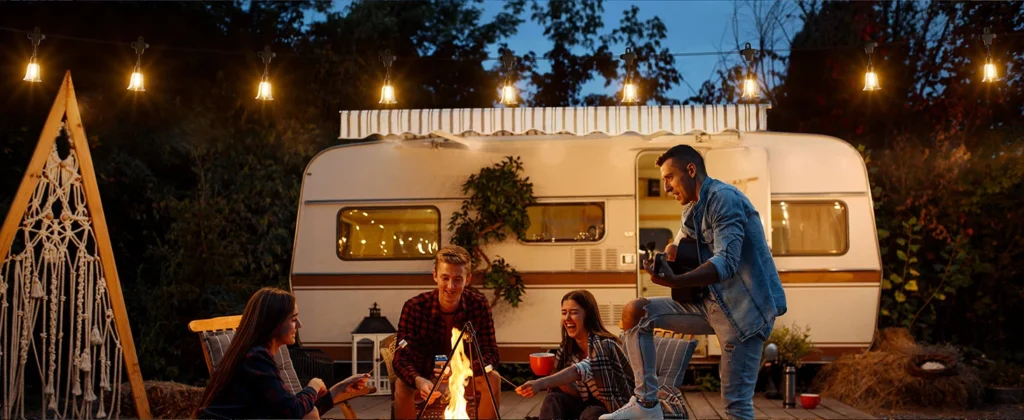
Solar vs. Battery-Powered Lights
Battery-powered lights require frequent battery replacements, increasing costs and waste. Solar camping lights, on the other hand, rely on free solar energy and often include rechargeable batteries, making them more sustainable and cost-effective over time.
Solar vs. Fuel-Based Lanterns
Fuel-based lanterns, such as those using propane or kerosene, provide bright light but require carrying flammable materials, posing safety risks. Solar camping lights are safer, easier to use, and don’t emit fumes, making them ideal for family camping or enclosed spaces like tents.
Creative Uses for Solar Camping Lights
Beyond basic illumination, solar camping lights can enhance your outdoor experience in unique ways. Here are some innovative ideas to inspire you.
Enhancing Campsite Ambiance
String-style solar camping lights can be draped over tents, trees, or picnic tables to create a warm, inviting atmosphere. Choose models with adjustable colors or modes, such as warm white or RGB, to match the mood of your trip.
Emergency Preparedness
Solar camping lights are excellent additions to emergency kits. Their ability to charge via sunlight or USB makes them reliable during power outages or natural disasters. Compact models can be stored easily in a car or home for unexpected situations.
Garden and Patio Lighting
While designed for camping, these lights are also perfect for home use. Use solar camping lights to illuminate garden paths, patios, or outdoor seating areas, adding both functionality and charm to your backyard.
Top Considerations for Choosing Solar Camping Lights
With so many options available, narrowing down the best solar camping lights requires careful consideration. Here are factors to guide your decision.
Matching Lights to Your Camping Style
For backpackers, lightweight and compact lights are essential to minimize pack weight. Car campers may prioritize brighter, larger lanterns for group use. Consider your typical camping environment—forest, desert, or beach—and choose lights suited to those conditions.
Brand Reliability
While avoiding over-reliance on specific brands, it’s worth noting that reputable manufacturers often provide detailed specifications, warranties, and customer support. Research user reviews and product ratings to ensure quality and performance. For example, Bitpott offers durable solar camping lights, but many other brands provide comparable quality at various price points.
Budget and Value
Solar camping lights range from budget-friendly options under $20 to premium models costing $50 or more. Balance cost with features like brightness, battery life, and durability to find the best value for your needs.
Tips for Integrating Solar Camping Lights into Your Adventures
Incorporating solar camping lights into your outdoor routine can elevate your experience. Here’s how to make them a seamless part of your trips.
Planning for Multi-Day Trips
For extended camping, choose lights with long battery life or multiple charging options. Pack a portable solar charger or power bank as a backup for cloudy days. Test your lights before leaving to ensure they’re fully charged and functional.
Combining with Other Gear
Pair solar camping lights with other eco-friendly gear, such as solar-powered stoves or chargers, for a fully sustainable setup. This approach minimizes your environmental impact while ensuring you have all the amenities needed for a comfortable trip.
Sharing with Fellow Campers
If camping in a group, coordinate lighting needs to avoid overpacking. Share solar camping lights with different functions—like lanterns for communal areas and spotlights for tasks—to create an efficient and well-lit campsite.
The Future of Solar Camping Lights
As technology advances, solar camping lights are becoming more efficient and versatile. Innovations like flexible solar panels, longer-lasting batteries, and smart features (such as app-controlled brightness) are on the horizon. These advancements promise even greater convenience and sustainability for outdoor enthusiasts.
Emerging Trends
Look for lights with integrated sensors that adjust brightness based on ambient light or motion, saving energy and extending runtime. Compact, multi-functional designs that combine lighting, charging, and even Bluetooth speakers are gaining popularity, catering to modern campers’ needs.
Sustainability in Focus
The growing emphasis on sustainability is driving demand for solar-powered gear. Solar camping lights align with this trend, offering a low-impact way to enjoy the outdoors while preserving natural resources for future generations.
Conclusion
Solar camping lights are more than just a practical tool—they’re a sustainable, versatile, and cost-effective solution for illuminating your outdoor adventures. By choosing the right model, understanding its features, and using it effectively, you can enhance your camping experience while minimizing your environmental impact. Whether you’re lighting up a campsite, preparing for emergencies, or adding charm to your garden, solar camping lights offer endless possibilities. Embrace the power of the sun and make your next outdoor trip brighter and greener.

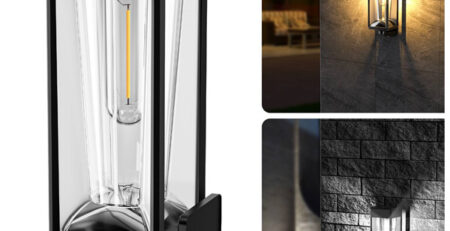

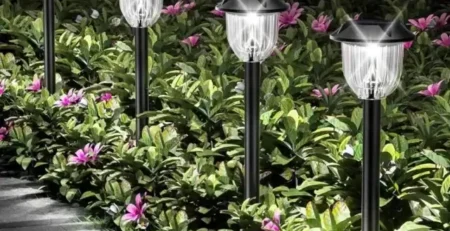




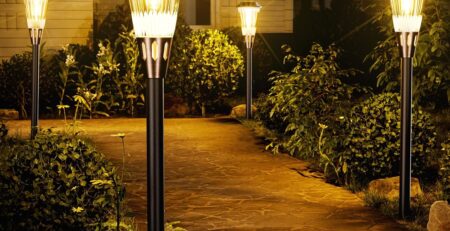


Leave a Reply